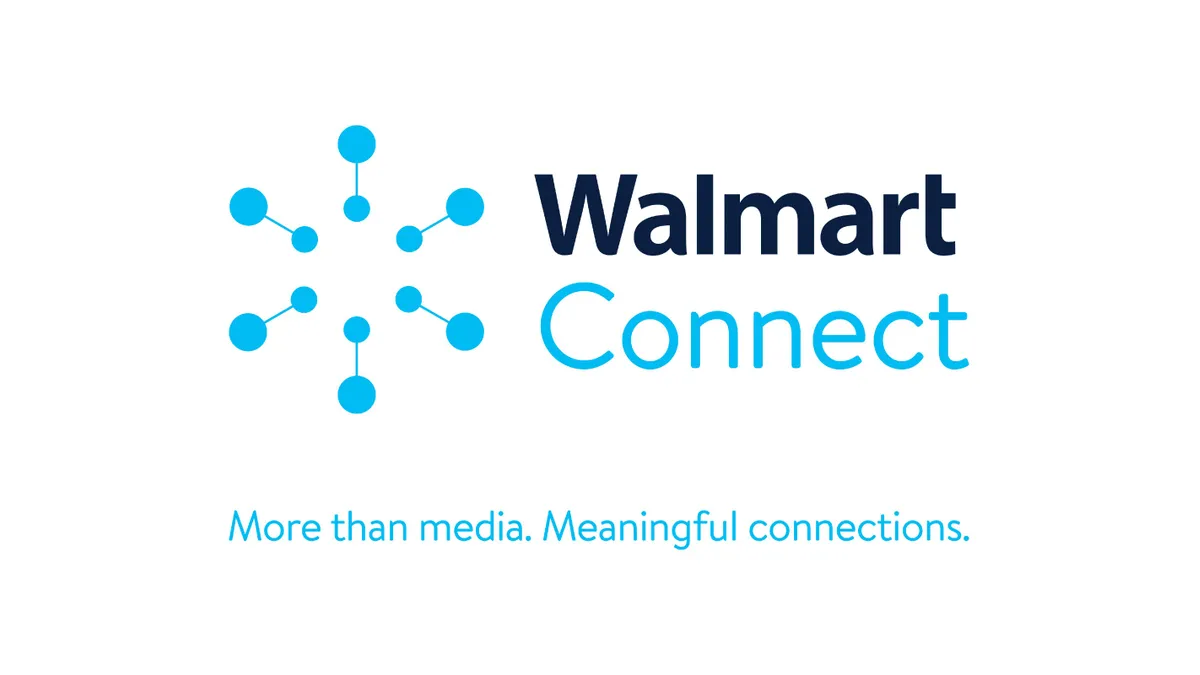Dive Brief:
-
Walmart unveiled its new demand-side-platform (DSP) that combines the big-box retailer's first-party data with the expertise of ad-tech partner The Trade Desk, per a company announcement.
-
Walmart DSP will be available to select suppliers by the end of October, ahead of the holiday shopping season. The platform offers full access to The Trade Desk's inventory across channels including display, streaming, mobile, audio and connected TV and draws on shopping data and audience insights from Walmart's website, mobile app and 4,700 brick-and-mortar locations.
-
Walmart is positioning its ability to connect in-store and online sales as a leading differentiator to other DSPs, providing a closed-loop measurement system. The Walmart DSP will serve as an important test as to whether the company can scale up an ad-tech offering as the retail media space grows more competitive.
Dive Insight:
Walmart DSP is the culmination of a partnership with The Trade Desk that formed in January, when the retailer rebranded its media network from Walmart Media Group to Walmart Connect. At the time, Walmart detailed plans to have a DSP ready in time for the high-volume holiday period, a goal it's now met.
The DSP promotes the ability to connect brands to consumers in a precise fashion using Walmart's past purchase data, predictive audience segments and brand-level shopping behavior data across mobile, digital and in-store channels. In tapping into The Trade Desk's inventory, users can also manage multiple campaigns within one ecosystem. One goal is to expand the Walmart network's reach off site, beyond its own properties in the same manner as Google and Facebook. Time will tell whether advertisers gravitate to the platform, but Walmart Connect has proved promising at a time when many brands are seeking alternatives to those digital heavyweights.
Walmart Connect saw advertising sales grow 95% year-over-year in the second quarter, according to earnings results released earlier this month. Active advertisers were up more than 170% over the period, with noteworthy gains in markets like Mexico, India, Canada and Chile.
Packaged goods brands are looking for ways to more easily bridge their online and offline strategies as e-commerce continues to climb in importance amid the pandemic while foot traffic returns to normal levels. At the same time, Walmart's retail media network leans on the company's troves of first-party transactional data derived from 150 million weekly customers. First-party data is an increasingly valuable resource to marketers contending with the pending death of third-party cookies, which to date have been an essential way of keeping tabs on consumers online.
Google earlier this summer pushed its plans to deprecate cookies back by a year to 2023, but industry players are still experimenting with new targeting methods as they steel themselves for a digital marketing sea change — one from which Walmart could reap big rewards. The Trade Desk, itself a noteworthy DSP provider, developed Unified ID 2.0, one of the more widely endorsed cookie alternatives.
"It's great that a major retailer has taken steps to control their own destiny as we accelerate toward an online world with increased privacy and less cookie-enabled tracking," said Jude O'Connor, chief revenue officer of AdColony, in emailed comments about the Walmart DSP news. "Even though Google has delayed the inevitable death of the cookie, smart advertisers should be investigating and testing other solutions now, and not only when they are forced to."
Walmart has invested more time and talent into rounding out Walmart Connect as rivals like Target, CVS and Walgreens — not to mention Amazon — make similar moves into retail media. Target this week announced its hiring of Sarah Travis, a former Google retail executive, to lead its Roundel media business starting Sept. 13.
Launching and managing a DSP at scale is a different beast altogether. Many firms dedicated to ad tech have struggled to gain traction in a world dominated by the Google-Facebook duopoly and defined by complicated, often opaque technology. Walmart does not have a deep ad-tech background, and in recent years has even encountered bumps in the road in transitioning more of its tech and marketing operations in house.















